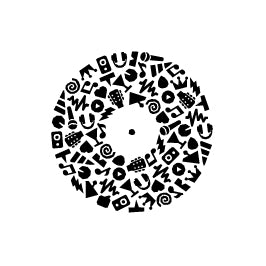VMP Rising: Semiratruth
“In my own listening experience, I truly want to hear something I've never heard before,” Semira Garrett tells me from their apartment in New York, where they moved in May after spending most of their lifetime in Chicago. “I love the funky, weird, what the fuck was that? music. Cause I be bored. I have ADHD. And I just don't ever want to be boring, because that wouldn't even be true to myself.”
The Star of the Story was written over a particularly solitary stretch during the end of last year, coming to them in sporadic, subconscious bursts that eventually cohered around the themes of “stars, isolation, space, but also knowing [their] power and learning that there is still light when it's dark.” Where their previous albums, particularly the 2021 creative breakthrough I Got Bandz For the MoonLandin’, explored similar cosmic corner store terrain, they have never before sounded this extraterrestrial. From the opening track, the album announces itself like an unfiltered transmission from another dimension, the oblong synthesizers of “Fallingin” buzzing like a compilation of sound effects from an 80’s sci-fi film.
The album is particularly notable as a showcase for Garrett as a producer; showcasing a deft hand for hazy sample chops and atmospheric mixing, in addition to their own live instrumentation, specializing in “small, weird instruments.” A prized kalimba, an African hand piano, shows up on the sparse “Tinkering.” “Fallingin” gets its eerie quiver through a stylophone, a pocket synthesizer they play with for inspiration, fed into their SP-404. Alongside the nimble vocal fragments triggered throughout “Nightmoods” and the gauzy drum programming on “The Story,” it adds up to a playful palette, one applied to the album’s canvas with an impressively assured freehand.
While the set designs take center stage, Garrett’s propulsive slam poetry-informed prose steals each scene it appears like an award-worthy supporting character. On “Humpty,” Garrett proves they can punch at the weight of any of their peers in the underground, loosely retelling the nursery rhyme while stringing together lucid non-sequiturs like vintage DOOM: “I’m so cracked up, over it, gotta laugh/ Keep from the folding shit, they so boulderous/ Move out the way bitch/ Big shit coming/ They be avoiding like I smell like an onion/ Shrek mad layers/ Dragon slayer.”
This looseness marks Garrett’s increasing artistic confidence. With their earlier albums, they felt a pressure to let folks know that “I can write bars, I can rap!” They explain that back then, “it was to prove that point,” but this time it was “more of like, whatever comes out, comes out. I was just playing, letting myself improvise a little more.” Their intuition-led, on-mic presence draws back to their slam poetry days performing as part of the ensemble Louder Than a Bomb, and the catalyzing experimentation of their time spent in YouMedia, a program offered by their high school offering students free audio and video recording tools.
“It was just a lot of resources for high school kids,” Garrett says. “It really changed my life because I had a lot of adult mentors rooting me on, even when I was just an exploring kid.”
By giving them the self-sufficiency to record and produce their own music, YouMedia paved the path to Semiratruth making an album as insular and individual as The Star of the Story. Yet, they draw inspiration from a number of their similarly forward-thinking peers. They namecheck the “boundless expression” of KeiyaA, as well as the abstract electro-raps of friends JWords and Maasai: “They inspired me in the ways they make stuff that sounds weird as hell, but making it fly.”
It’s an aspiration Garrett achieves throughout the album. “Drifting,” a collaboration with fellow Chicagoan and flutist BSA Gold, steers its melodic soloing along a gravitational field of disorienting production effects. That track in particular feels like a tribute to their idol, Sun Ra, who, after seeing their Arkestra perform in New York years back, opened their “eyes to what music could actually be… of what a musician, but also a Black musician, could do.”
What Semiratruth has done with The Star of the Story is play at the outer reaches of their creativity until they’ve pushed it far enough to make it their center. Likewise, Garrett hopes to expand the borders of listeners’ own comfort zones. “Sometimes, stuff just has to sit with you,” they urge. “Nowadays, it’s so easy for us to quickly understand something and move on. But this album is definitely a meal, and maybe it's not gonna be so easily digestible at first. Give it time, it doesn’t have to be something you immediately understand.”

